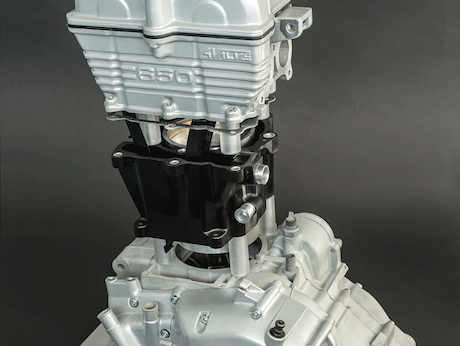As motorcycle manufacturers continue to strive for weight savings, could the future generation of bikes be made with plastic engine parts?
Europe’s largest application-oriented research organisation, the Fraunhofer project group, believes they can reduce the weight of an engine by 20% using fibre-reinforced plastic parts, such as the cylinder casing and even crankcase bearings, rather than metals such as aluminium.
Furthermore, they believe it won’t cost any more to mass produce.
They will demonstrate their experimental 650cc single-cylinder BMW engine at the world’s leading trade fair for industrial technology, the Hannover Messe, in Germany next week (April 13-17, 2015).
Project leader Dr Lars-Fredrik Berg says they used a special fibre-reinforced phenolic composite material for the cylinder casing.
It is made of 55% fibres and 45% resin and is cheaper than carbonfibre-reinforced composite. The composite was developed by SBHPP, a business unit of Sumitomo Bakelite.
The researchers have performed successful test runs on the engine and found it is not only capable of the same performance as conventional engines, but is quieter and gives off less heat.
Being lighter, it would also have advantages for a motorcycle’s handling, centre of gravity, acceleration and fuel economy.
The biggest challenge was making the material able to withstand extreme temperatures, high pressure and vibrations without suffering damage.
“First we looked at the engine design and identified the areas subject to high thermal and mechanical loads,” Dr Berg says. “Here we use metal inserts to strengthen their wear resistance.”
For example, the Fraunhofer researchers modified the geometry of the cylinder liner to ensure that the plastic is exposed to as little heat as possible.
“The characteristics of the plastic material also play an important role,” their website says. “It needs to be sufficiently hard and rigid, and resistant to oil, gasoline and glycol in the cooling water. It must also demonstrate good adherence to the metal inserts and not have a higher thermal expansion coefficient than the metal – otherwise the inserts would separate from the substrate.”


